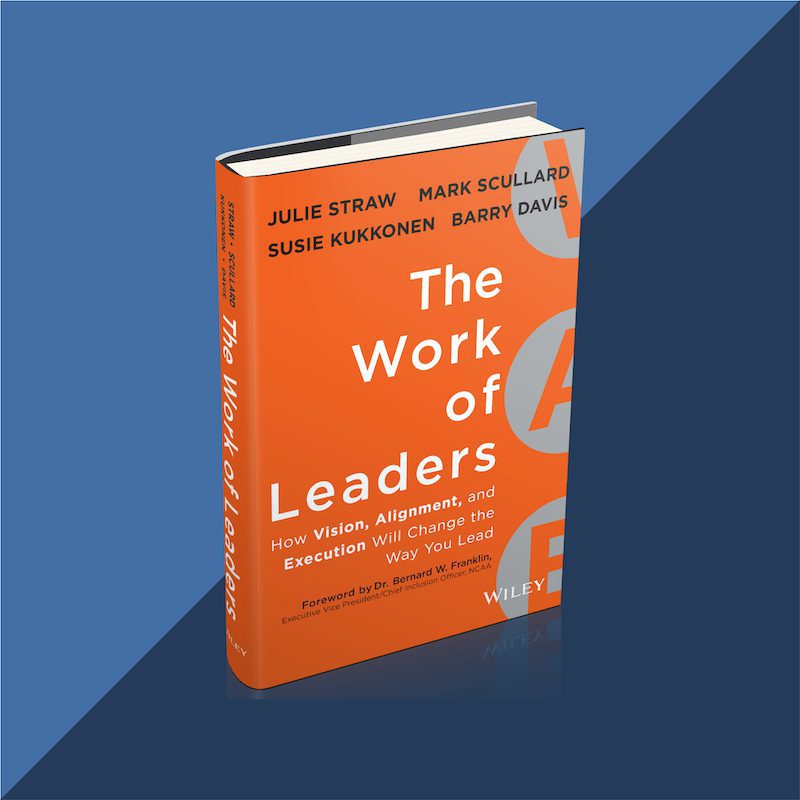
In this episode, I visited with thought leader Pam Haines. Pam was the chief change agent at Slate Consultants and was known as Slate’s Professor of Productivity. Listen in as Pam shares why admiring a problem will never solve it.

Bookends Book Club
An author interview podcast series
Bookends Book Club is a podcast for business leaders to learn more from the authors of key books in the area of leadership, talent development, teamwork, and other issues related to the workplace. Our author interviews take you on an extensive walkthrough of each featured book in just one hour.
Listen to the interview or read the transcript
Reflect using our discussion guide
Discuss with friends and colleagues
Podcast Transcript
Use the table of contents below to navigate to parts of this interview that interest you or to revisit parts of the interview you really liked. Use the “follow along” time stamps to listen to that particular part of the podcast above.
01
Blockers and getting unstuck
Follow Along - 00:46
Susan: Let’s talk a little bit about this idea of getting unstuck. What do you mean by that?
Pam: What I mean is identifying what is getting in the way for us–or any individual–to have forward motion in any aspect of their life. Those are blockers. To get unstuck, we have to first identify these blockers, and establish strategies, techniques, and activities to remove them so we then can move forward.
Susan: Can you think of an example of a blocker that you’ve encountered?
Pam: Absolutely. I was working with a client who was really very good at analyzing a situation: how she got there, what she could have done differently, what she could do differently in the future, etc. She analyzed the problem on all sides. But she didn’t take one step to solving it.
Susan: So how often do you encounter this? And what would you say is the key thing that’s going on for the folks that you’ve worked with? Why are they reaching out to you?
Pam: Well, mainly, it is a common problem. All of us have been stuck at one point or another, and we just don’t know how to move forward. So people recognize that they need help of some kind. They reach out to a coach, or a friend, or colleague for help. What we do, our approach, is to start with the end goal in mind. We help clients put aside the noise and the distractions around how they got to where they are and figure out where they want to go.
02
The "three R's"
follow along - 02:19
Susan: Are there trends and patterns that you’ve noticed that lead to this kind of behavior?
Pam: Absolutely. It’s interesting to see these patterns emerge in my work. There seem to be three categories of need I see in the people who come to me. I call these the three Rs:
- Redirect
- Revitalizing
- Repurpose
An example of redirect is typically someone who’s in the early stages of their career, and they’re heading down a path. They’re working in a job, and they realize it’s really not for them. They want to shift gears and do something different.
The revitalize stage typically hits mid-career. At this stage, people have usually been quite successful. They’re doing their thing, but they’re starting to stall or plateau. They’ve stopped any forward motion. It’s “business as usual” and they recognize this. That’s why they come to me. They want me to help them interrupt their “business as usual” so they can get back on a forward path.
The repurpose stage usually occurs later in a person’s career. These folks have been magnificently successful. They’ve achieved a lot throughout their career, but now they’re looking for what’s next. They might be of a retirement age, or they might just be ready to move on to something different. And, just because a person is of retirement age doesn’t mean they want to retire. Folks in this stage want to figure out what to do next that will add great purpose to their lives.
03
Trouble moving forward
follow along - 03:41
Susan: The folks that you have been working with are really smart people. Why would you say they’ve been having trouble moving forward? What stops them?
Pam: I think what stops them is a couple of things. As a society, we tend to look for silver bullet solutions which, frankly, do not exist. Another thing is that people have pain points. They feel these pain points, and they try to treat them. But they typically are treating symptoms of an underlying issue or problem that they can’t get to or understand what it is. So they’re trying to solve the wrong problem. That keeps them where they are continually trying to solve something–throwing one solution after another–at the problem without ever solving it.
Susan: That makes a lot of sense. You described three different places in the career cycle which you call the three Rs. Could you take one of these and talk about how, if a client was in that place in their career, you would help them break out of that cycle.
Pam: Absolutely. And, this illustration is true for all three of the Rs. Our starting point is to get really clear on a person’s core. And what I mean by that is their core is their essence. It’s what makes them tick. We use a variety of tools and exercises in the first work we do with a client, regardless of where the person is in the three Rs. This is to help them identify their core values.
If you are very clear on your core values, this gives you a powerful tool which is a crystal clear framework for decision making. It also builds the confidence to ask for help in areas that aren’t your focus, and it eliminates self-defeating behaviors like procrastination.
04
The journey towards results
follow along - 05:43
Susan: What are some of the results that you’ve helped folks experience as you’ve worked with them in this process?
Pam: One of the greatest pleasures in my work is to witness the transformation when someone suddenly becomes unstuck. It is life changing for my clients. They suddenly are able to make clear decisions that they’re confident about without going into paralysis by analysis. They have an overall reduced level of anxiety. They walk and talk at an elevated lifted level, and they’re more confident. They stop second guessing themselves. And overall, they just have a brighter, more positive outlook.
Susan: That sounds great. I’m sure everybody wants that. Share a story, if you could, that illustrates what this journey has looked like for one of your clients on how you’ve coached them to a new place.
Pam: I’d love to. I was working with a client who is a global HR manager. He’s working in the global headquarters in the United States. He’s originally from England, and he really wants to get back home to his aging parents, etc. So, he wanted to get back to England, and he kept looking at jobs in France, and Spain, and all over Europe.
I stopped him, and I asked him, “How is this getting you closer to England?” And I brought him back to his core values. His number one core value was family. His top three core values were family, compassion, and love.
I said to him, “How does being in Spain, or France, or anywhere else in Europe help you satisfy your core values?” And he just responded and he said, “Oh, it doesn’t.” So he stopped looking at jobs that he was being offered in other countries and focused on the greater London area.
Susan: That’s terrific. What a great story.
05
Discover your core values
follow along - 7:51
Susan: I have one final question for you Pam. You talked about this gentleman’s core values. Do you get a sense that most people know what these values are when you begin to work with them, or are they surprised to discover them? Do they have a really difficult time?
I know you have a process for helping people through that, but without going into all of that, what has been your sense: how much clarity do people have when they come to you and know what these values are?
Pam: Very little clarity and focus. Surprisingly, it’s very general I would say. People know what feels good and doesn’t feel good to them. And the thing with my clients–when they get very clear on their core values–they can recognize when their values are being stomped on or challenged because it inflicts pain. So it’s really interesting that once they are able to focus on what is at their core, they’re able to make clear and concise decisions and know that they are on the right path.
Susan: Thank you so much for that Pam. And, thanks for taking the time to share with us about your work today. I’m sure that there are a lot of folks in need of this kind of service, and I’m sure that you would be delighted to hear from them if that were the case. I appreciate your time today.
Pam: Thanks, Susan. Always a pleasure to speak with you.
Learn More

We have only scratched the surface of The Work of Leaders in our interview with Julie Straw. Our firm has had the opportunity, first hand, to really see the power of this model in action. Pick up a copy of the book today to learn more about the model of Vision, Alignment and Execution.
